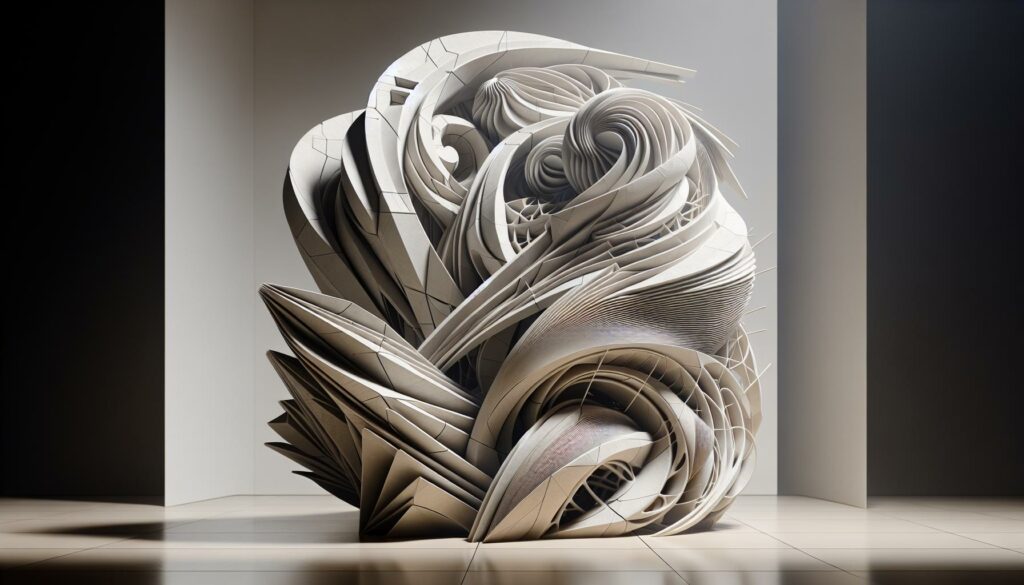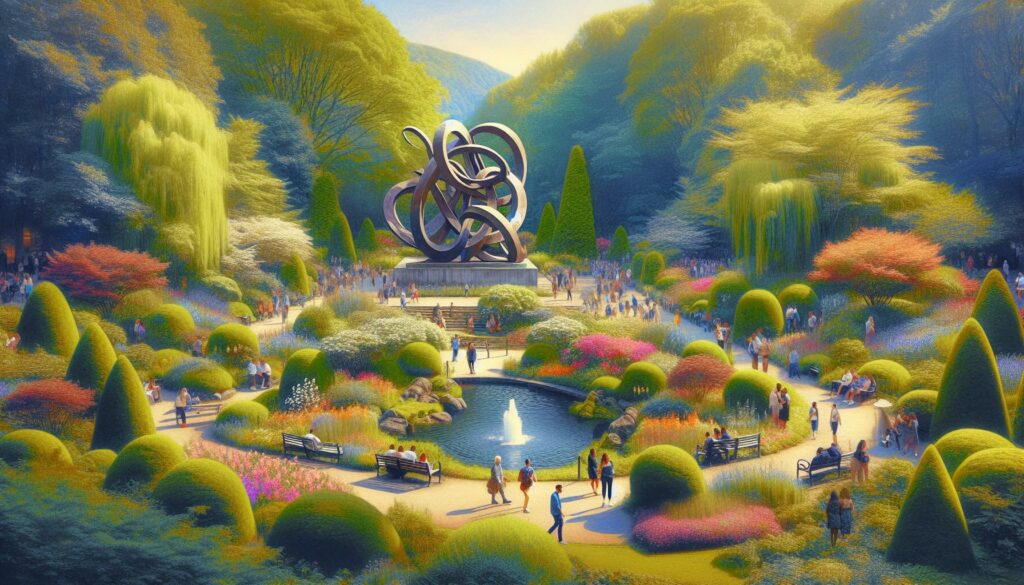Art has a unique way of speaking to us, and sculptures often capture our imagination in ways that paintings cannot. When I first encountered this particular sculpture, I was struck by its intricate details and the emotions it evokes. Every curve and line tells a story, inviting viewers to explore the artistic elements that bring it to life.
In this article, I’ll dive into the key artistic components that define this sculpture. From its form and texture to the interplay of light and shadow, each element plays a crucial role in shaping our experience. Join me as we unravel the layers of creativity and craftsmanship that make this piece truly remarkable.
Key Takeaways
- Artistic Elements Defined: The sculpture is characterized by key artistic components such as form, texture, light, shadow, color, and materials, each contributing to its overall impact and emotional resonance.
- Dynamic Form and Structure: The blend of organic and geometric forms creates a sense of movement and balance, inviting viewers to explore the sculpture from various angles.
- Interactive Texture: The mix of smooth and rough surfaces adds depth and invites tactile exploration, enhancing the viewer’s connection to the artwork.
- Light and Shadow Play: The thoughtful interplay of light and shadow transforms the sculpture throughout the day, altering its perception and engaging the audience dynamically.
- Cultural and Historical Context: The sculpture’s significance is enriched by understanding the artist’s background, the time period it emerges from, and its place within modern art history, reflecting broader artistic movements.
- Emotional Impact and Symbolism: Viewer reactions are influenced by personal experiences, with the sculpture evoking themes of identity, nature, and transformation, fostering meaningful dialogue about art and society.
Name and Describe The Artistic Elements of This Sculpture.
This sculpture stands out due to its compelling use of various artistic elements. The form captures the viewer’s attention, blending organic shapes with geometric precision to create a sense of movement and stability. Each curve and edge demonstrates the artist’s skill in manipulating space, making the sculpture dynamic from multiple angles.
Texture plays a crucial role in enhancing the sculpture’s visual appeal. The surface features a mix of smooth and rough areas, inviting touch and encouraging interaction. Such contrasts enhance the depth and detail, drawing the observer in for a closer look.
Light and shadow interplay significantly affects the overall perception of the sculpture. The thoughtful placement of highlights accentuates key features, while shadows add dimension. This dramatic effect transforms the sculpture throughout the day, as natural light shifts, further engaging the audience.
Color also contributes to the sculpture’s impact, albeit subtly. The choice of materials, such as bronze or stone, affects how light reflects and refracts, enhancing the overall aesthetic. The patina adds depth, creating a timeless quality that resonates with viewers.
These artistic elements collectively elevate the sculpture’s significance, showcasing the creativity and craftsmanship involved in its creation. Each component contributes uniquely to its allure, inviting exploration and contemplation from anyone who encounters it.
Historical Context
Understanding the historical context of this sculpture enriches appreciation for its artistic elements. The time period, cultural influences, and the artist’s background all contribute to its narrative and significance.
Artist Background
The artist of this sculpture, known for their innovative techniques, has significantly impacted contemporary sculpture. Their education at renowned institutions equipped them with the skills that blend traditional methods and modern aesthetics. Many of their works explore themes such as identity, nature, and the human experience. This artist has garnered numerous awards and recognition, establishing a reputation for pushing creative boundaries in the art world.
Sculpture’s Place in Art History
This sculpture represents a pivotal moment in the evolution of modern art. Emerging during a period marked by experimentation and abstraction, it reflects shifts in artistic expressions from the 20th century. Influenced by movements such as Abstract Expressionism and Minimalism, the sculpture stands as a bridge between historical precedent and contemporary approaches. It invites dialogue about artistic intentions, form, and the viewer’s experience, solidifying its role within the broader narrative of art history.
Artistic Elements to Consider
Analyzing the artistic elements of this sculpture reveals the depth and complexity that contribute to its overall impact. name and describe the artistic elements of this sculpture. Each component plays a crucial role in evoking a specific emotional response from viewers.
Form and Structure
Form and structure define the sculpture’s overall shape and composition. I notice an engaging blend of organic and geometric forms that create a dynamic visual experience. The curves and lines harmonize to convey a sense of movement, while symmetrical elements provide balance. This duality enhances the sculpture’s aesthetic appeal, inviting exploration from multiple angles.
Materials Used
Materials significantly influence the sculpture’s character and interaction with light. The choice of stone, metal, or wood affects its tactile quality and durability. For instance, a polished marble surface can evoke elegance, while aged wood suggests warmth and history. These materials contribute to the sculpture’s narrative, reflecting the artist’s intentions and the cultural context from which it emerged.
Texture and Finish
Texture and finish add dimension to the sculpture, captivating the viewer’s sense of touch and sight. I observe a combination of rough and smooth areas, creating contrast that draws the eye. These textural elements invite exploration, as the tactile experience enhances the emotional connection. The finish, whether matte, glossy, or patina, further impacts how light interacts with the surface, fostering depth and complexity.
Color and Lighting
Color and lighting play pivotal roles in shaping the viewer’s perception. The use of color, whether vibrant or subdued, can evoke different moods and emotions. I notice that the materials used often influence how light interacts with the surface, creating a play of highlights and shadows. This interplay transforms the sculpture throughout the day, allowing it to evolve in appearance and inviting continual reflection from viewers.
Interpretation and Emotional Impact
Sculptures evoke powerful emotional responses, making the viewer’s experience dynamic and deeply personal. Understanding viewer reactions along with the sculpture’s symbolism and themes enhances its overall significance.
Viewer Reactions
Viewer reactions vary widely, influenced by individual experiences and interpretations. Some might feel awe due to the sculpture’s scale and craftsmanship, while others may connect emotionally through its representation of humanity or nature. Intimate encounters with the piece often lead to contemplation, sparking discussions about art and life. Many viewers express feelings of nostalgia or introspection, reflecting on their own journeys as they engage with the artwork. This spectrum of reactions demonstrates the sculpture’s ability to resonate on multiple levels and invites a range of interpretations.
Symbolism and Themes
Symbolism plays a crucial role in deciphering the sculpture’s deeper meaning. Elements within the piece often reflect broader themes such as identity, transformation, and connection to nature. For instance, the incorporation of organic shapes may symbolize growth, while geometric forms can represent stability or order. The artist’s choice of materials also contributes layers of meaning; for example, using recycled materials might speak to environmental concerns. Each viewer’s unique background influences their understanding of these themes, enriching the dialogue surrounding the sculpture and situating it within a wider cultural context. The infusion of relevant themes encourages conversations about society, progress, and the human condition, marking the sculpture as a significant point of reflection in contemporary art.
Rich Tapestry
The exploration of this sculpture’s artistic elements reveals a rich tapestry of creativity and intention. Name and describe the artistic elements of this sculpture. Each component from form to texture plays a vital role in shaping the viewer’s experience. I find it fascinating how the interplay of light and shadow transforms its appearance throughout the day, making it a living piece of art.
As I reflect on my own emotional responses to the sculpture, I realize it invites a personal dialogue with its audience. Its ability to evoke feelings and provoke thought is a testament to the artist’s vision and craftsmanship. This sculpture not only stands as a remarkable work of art but also as a bridge between history and contemporary expression, encouraging us to engage with the deeper themes of identity and connection.



